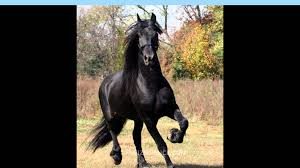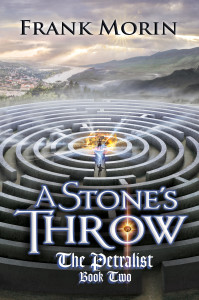“Come in, — come in! and know me better, man!” -Charles Dickens, A Christmas Carol
We’d love for you, our wonderful readers, to get to know us better. That’s why, each month, Kristin Luna will interview a member of The Fictorians. We’ll learn more about each member, such as their writing processes, their work, where they live, and what they prefer to drink on a warm summer’s day. We hope you enjoy this monthly installment of Meet the Fictorians.
Meet the Fictorians:
Mary Stormy Pletsch

Kristin Luna (KL): Hi Mary! How are you doing and what are you drinking presently?
Mary Pletsch (MP):I’m doing well and I’m drinking a can of Moxie. Let’s toast all the folks from Maine reading this and nodding. Everyone looking bewildered, head to Maine and see if you are among those lucky few who appreciate this delicious cola-type beverage.
KL: I love your love for Transformers. Please tell us when your love of them started and do you collect any action figures as an adult?
MP: Oh wow, in the fall of 1984 when the original animated series first aired. My Transformers and My Little Pony cabinets hold my life-long collections, still growing.
KL: How long have you been a Fictorian?
MP: I was here at the start of the site! I think that was 2010?
KL: One of the originals!
If you don’t mind sharing, where do you live? How does it play in to what you write about?
MP: I’ve lived in three provinces, but I do hold a special place in my heart for the Maritimes. I was proud to team up with my husband to write “The Island Way” in Tesseracts 19: Superhero Universe, which is a story about a superhero from Prince Edward Island caught between her family’s traditions and the opportunities she could find on the mainland.
KL: Your short stories have been in TWO unicorn anthologies: One Horn to Rule Them All and A Game of Horns. Tell us a little about both stories, and which one do you like best?
MP: Well, “Queen of the Hidden Way” in A Game of Horns is a prequel to “A Single Spark” in One Horn to Rule Them All. “A Single Spark” is the story of a young girl making her own destiny by joining a group of unicorn riders…and I really think that one is my favourite, because “The Unicorn Riders” is a game I used to play with my toys when I was a kid, and to have that mythology turn into an actual published story means a lot to me. Since the protagonist of “Spark” is a new recruit and not the group’s leader, I decided to make my second story be about the origin of the leader, who made her own decision to create the unicorn riders instead of fighting for her place on her nation’s throne. I like the way it turned out too, but as a prequel, it hasn’t got all the Riders in it yet.
KL: You’ve also had short stories in Apex magazine, Shock Totem, and other anthologies. What do you love about writing short fiction?
MP: I actually prefer long-form writing…novels and novellas. I like having the space for my characters to grow and change. I’ve learned a lot, though, from writing short fiction. Novels, by virtue of their length, are a harder way to practice building a story arc because they take so much longer to complete. And the word limits on short stories have done a lot to cure me of wordiness: when you’ve only got so many words to work with, you have to make every word count. I’ve also learned to focus in on primary characters and primary conflicts, and am less likely to get sidetracked by secondary characters or out-of-control subplots. This is why I recommend shorts as “learning-to-write” practice.
KL: That’s really interesting! So then what kind of stories do you gravitate toward writing and why? (Certain kinds of themes, protagonists, antagonists? Certain settings you seem to prefer?)
MP: I like to write military stories, but when I look back at my published works, they really are a mix. Every once in a while I get myself in the mood for a good creepy tale, but I’m not predominately a horror writer. I’m a sucker for tough older women and “found family,” particularly characters with a tendency to “adopt” younger characters.
KL: Are you working on any longer fiction right now or a book?
MP: I’m working on a book right now for The Ed Greenwood Group! It’s a space opera set in a “pulp sci-fi” universe: think larger-than-life heroes, ace pilots and rag-tag mercenaries, and a starship held together with baler wire.
KL: Sounds like a lot of fun! Are there any future projects of yours we can look forward to?
MP: Well, there’s that book. 🙂 That should be coming out in 2018! I’ve not had as much time to write shorts this year now that I’ve got novels on my plate…but “Women in Practical Armor,” including my story “The Blood Axe,” should be out soon.
KL: What advice (that you’ve received) would pass on to a newer writer?
MP: Don’t be afraid to break rules. “Rules” that cause more harm than help don’t do you any favours. I don’t write every day. I don’t write when I’m sick. Writing when I’m sick creates pages of garbage I have to delete anyway, and delays my recovery, meaning in the end I’m farther behind for trying to write every day. Don’t get up and write first thing in the morning if you’re more alert in the afternoon: do your “mindless” tasks and get those out of the way first. Make the rules work for you, not the other way around.
KL: What’s your favorite Fictorians post that you’ve written so far and why?
MP: I’m happy with “The Semi-True Story” as an answer to the question about my writing process, which is informed by my reality without being a fully accurate report on it.
***
If you have any questions for Mary, please leave a comment below. Thank you for reading!







